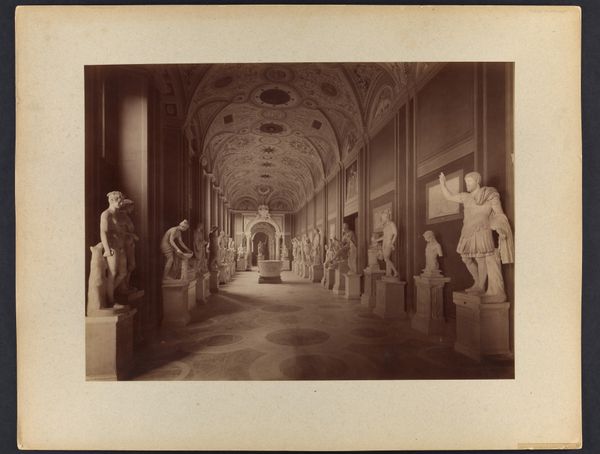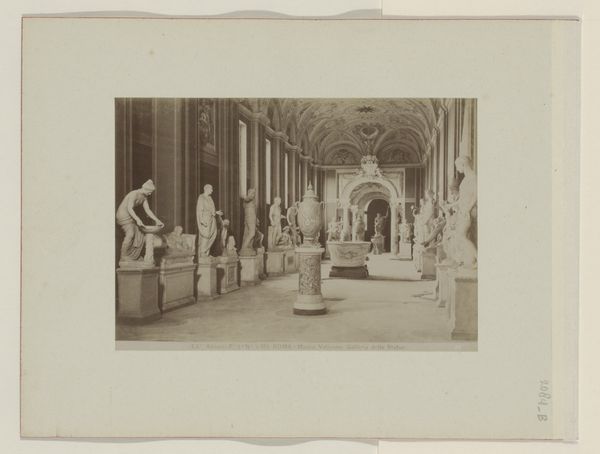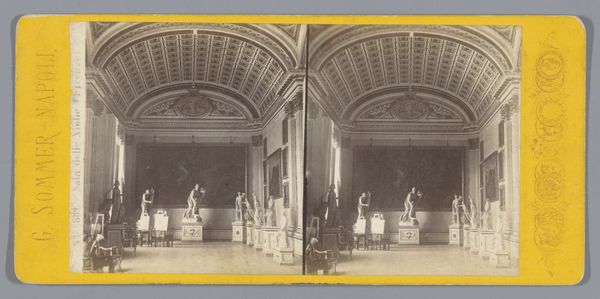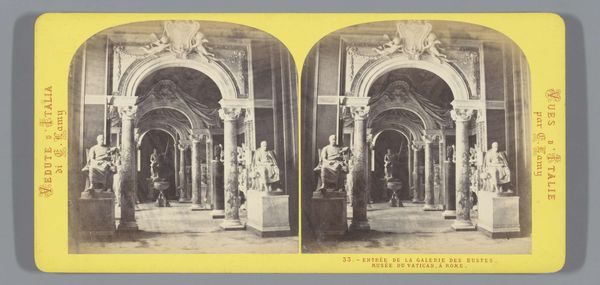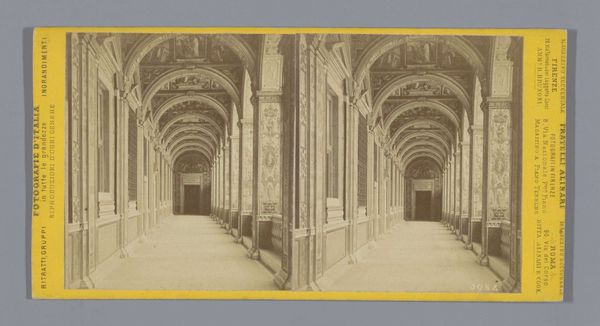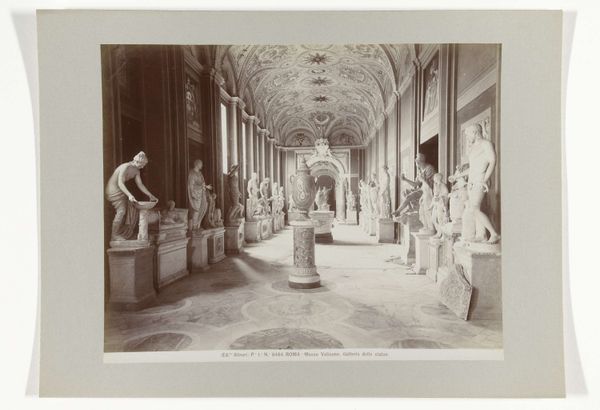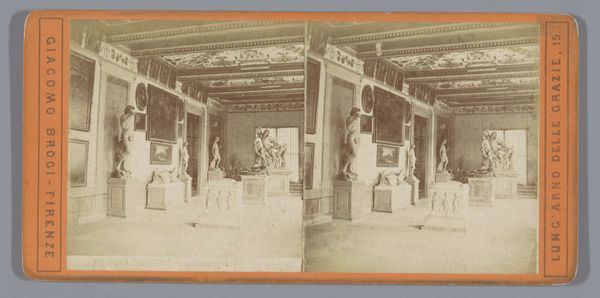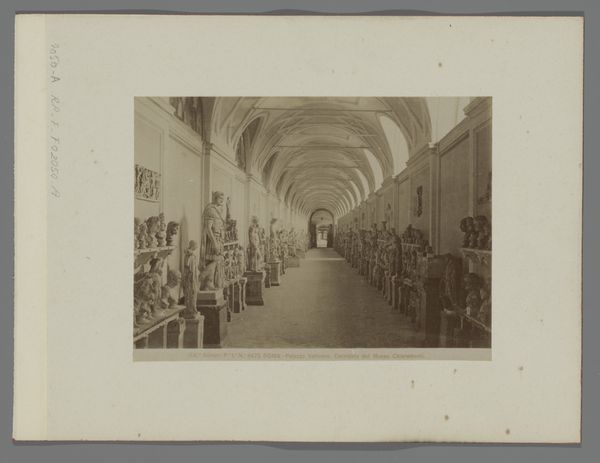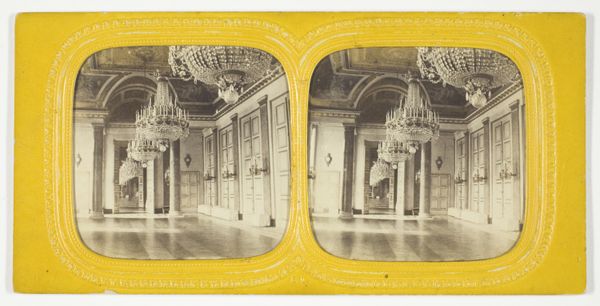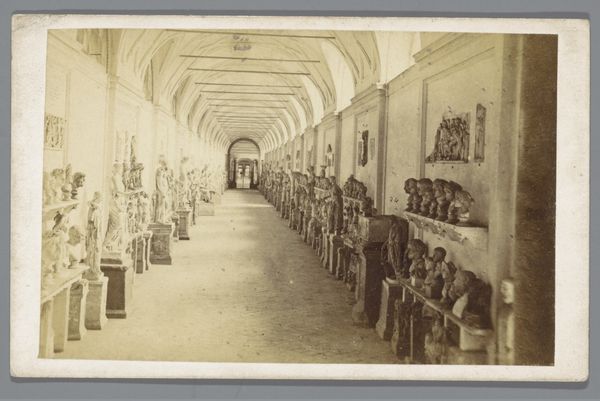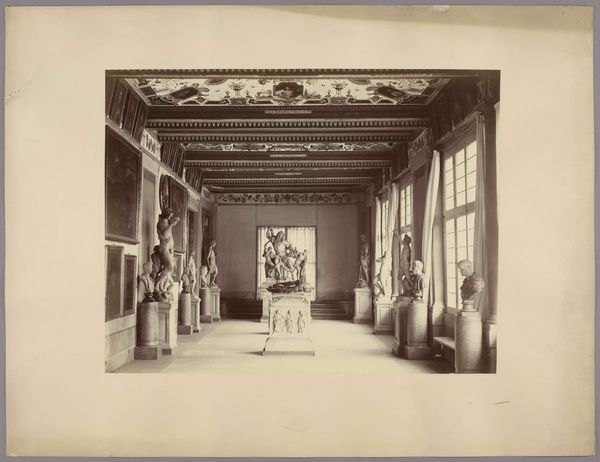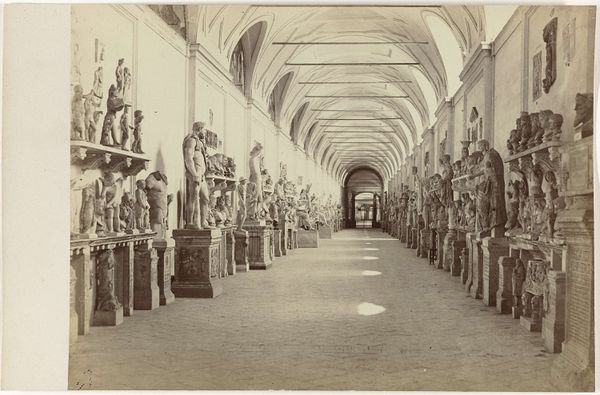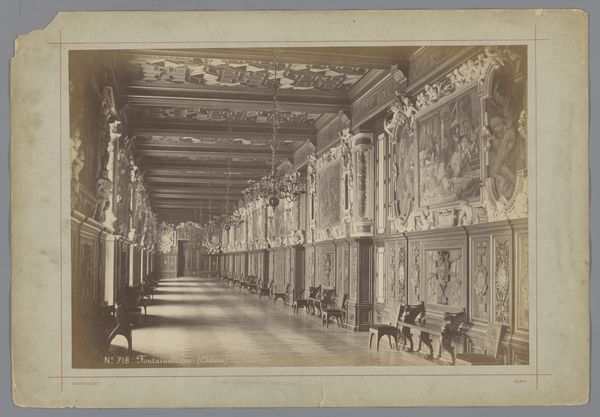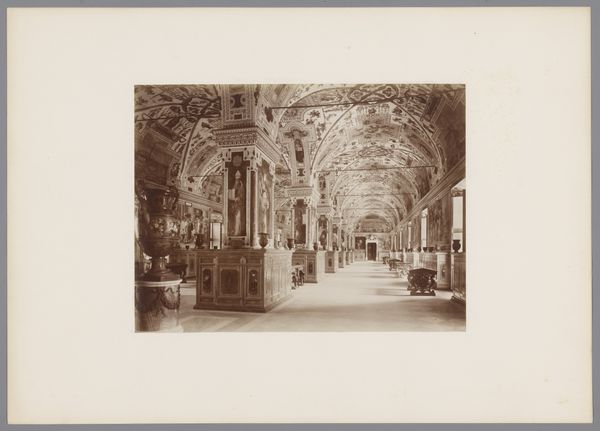
Dimensions: height 84 mm, width 178 mm
Copyright: Rijks Museum: Open Domain
Curator: What we have here is a photograph titled "Beeldengalerij in de Vaticaanse Musea," taken circa 1860-1880 by Giorgio Sommer. It depicts a sculpture gallery within the Vatican Museums. Editor: Immediately, I'm struck by the almost clinical atmosphere. The statues, the stark lighting, the repeated forms… it's like a factory assembly line, but for idealized human figures rendered in stone. Curator: Indeed. This photograph captures the late 19th-century obsession with the classical world and its artifacts. Sommer was quite prolific in documenting cultural heritage sites for a burgeoning tourist market. This photograph helped fuel the era’s widespread Neoclassicism movement. Editor: Precisely. Look at the framing, the careful staging, the way the statues are elevated on uniform pedestals. It transforms craftsmanship and the handling of materials into a controlled display, almost erasing the labor involved in extracting the stone and the meticulous sculpting required to give them form. Curator: The photograph also speaks to the power dynamics inherent in museum display. The Vatican Museums, repositories of vast wealth and artistic power, present these works within a specific narrative, a constructed lineage of Western art and civilization, with the church at the center of it. Editor: Absolutely, and notice the subtle gradations of light. The photographer uses light and shadow not just to model form, but to direct the eye, reinforcing a certain reading of these sculptures, turning ancient art into symbols of modern European power and control. It highlights how the act of display impacts meaning as much as any carving. Curator: And consider the implied viewer. Someone buying this photograph would, in many ways, gain the privilege of curating and owning an accessible copy of the great artworks, therefore enacting a new layer of ownership, so to speak. Editor: It’s funny how a still photograph, a single image, can point to a complex world of creation, labor, materials, and ultimately, the cultural authority vested in these objects through museums. Curator: Exactly. And it gives one pause when contemplating the relationship between photography and sculpture. Sommer essentially produced a mass-produced object OF objects presented in a gallery setting, prompting reflections on authorship and circulation in the age of mechanical reproduction. Editor: It definitely makes you question the relationship between the artifact and its commodification as a tourist image. The labor isn't just in making the sculptures, but in making them reproducible and accessible as signs of cultural capital.
Comments
No comments
Be the first to comment and join the conversation on the ultimate creative platform.
